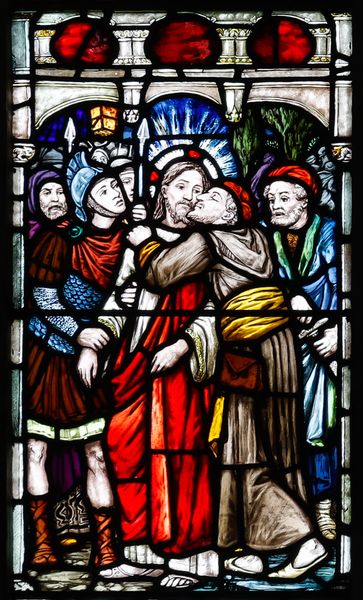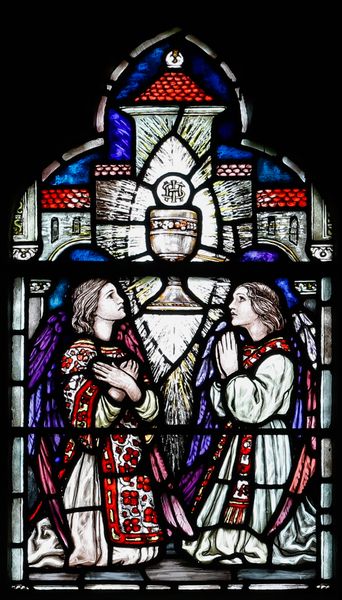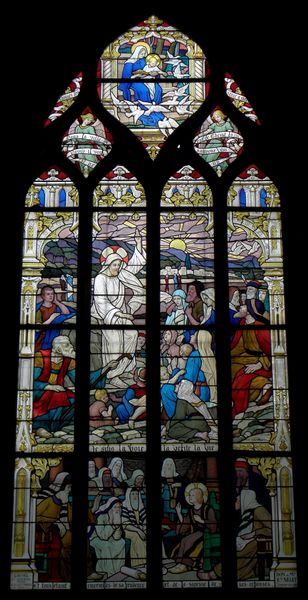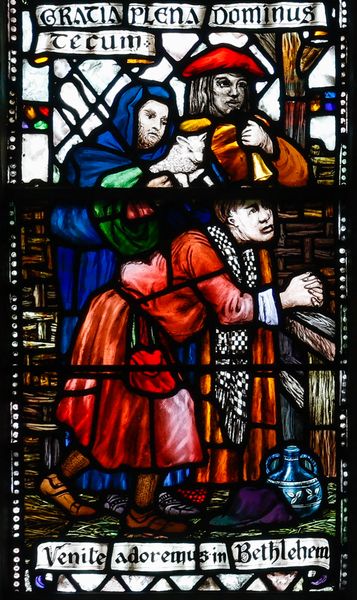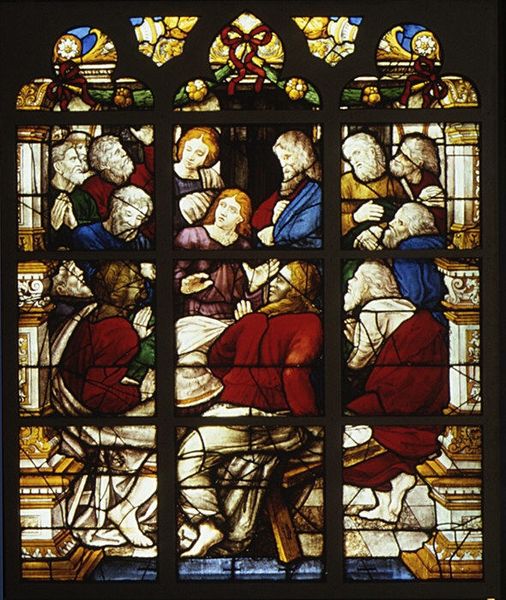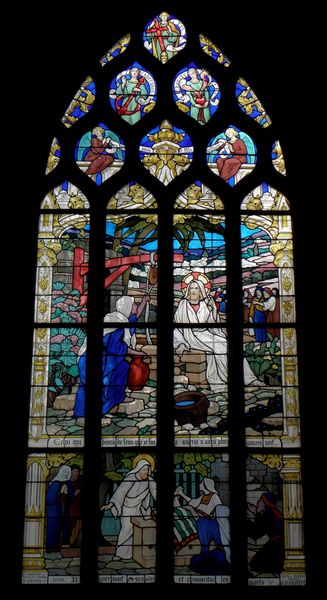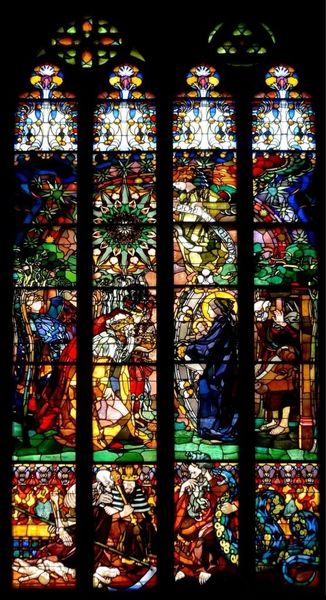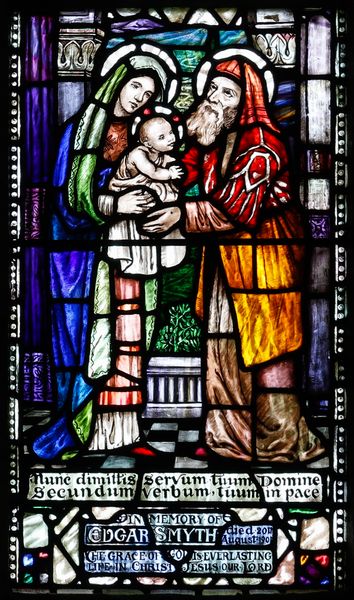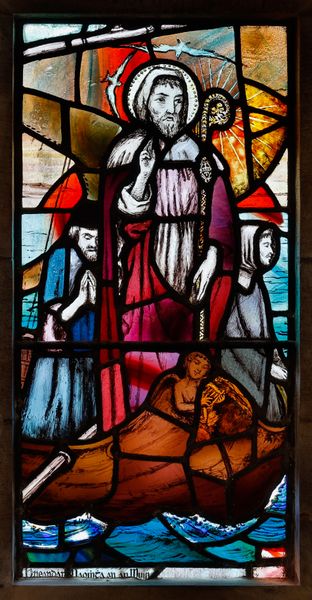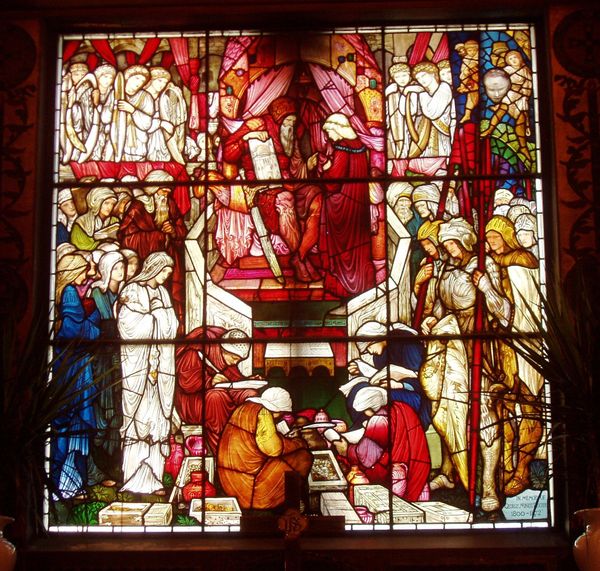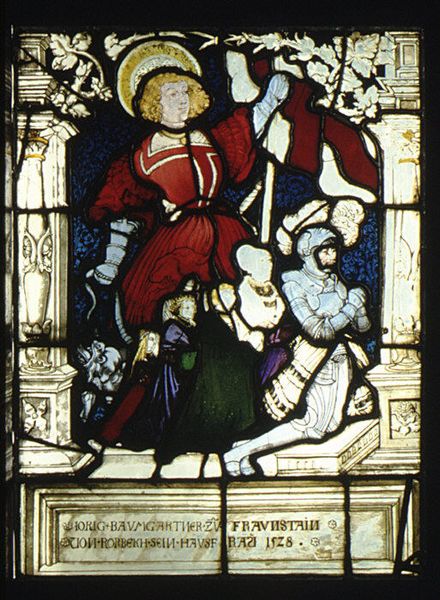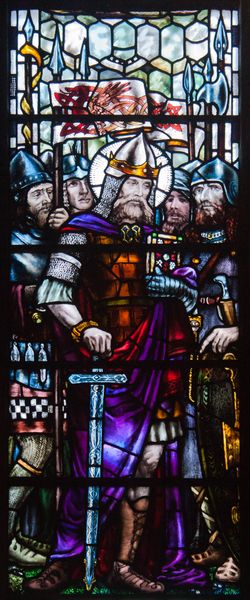
drawing, stain, painting, glass
#
portrait
#
drawing
#
medieval
#
stain
#
narrative-art
#
painting
#
landscape
#
figuration
#
glass
#
history-painting
#
academic-art
Copyright: Public domain
Curator: Let’s discuss Sarah Purser's stained glass artwork, "Loughrea St. Brendan's Cathedral", completed in 1908. What are your immediate observations? Editor: The use of such strong, almost cartoonish reds and blues contrasts intriguingly with the implied ethereal nature of the divine realm above. There’s an almost jarring visual hierarchy established through color. Curator: Precisely. Note the layering of shapes and colours, creating visual depth while simultaneously flattening the composition, particularly in rendering the figures' clothing. See how the drapery lacks deep chiaroscuro, simplifying the forms. Editor: The figures gazing upwards introduce narratives about social status, perhaps representing rural communities looking toward institutional religious power. Do you think the composition directs our gaze intentionally, reinforcing notions of who has access to grace? Curator: Absolutely. Purser utilises linear perspective minimally; instead, the composition guides the eye upward through the arrangement of figures and text, drawing attention towards the symbolic light source and angelic figure at the pinnacle. The eye's upward journey is not accidental. Editor: And note the text integrated directly into the glasswork, essentially framing the divine proclamation and thus situating the ordinary in relationship to religious order. The text, "Gloria in Excelsis Deo, Et in Terra Pax hominibus", locates the subjects within a broader conversation about religion and society. Curator: The textual inscription does function as a visual anchor and thematic foundation; one cannot separate the material reality of the art from its narrative function. The deliberate rendering—its colors and figures—mediates our understanding. Editor: And given the sociopolitical landscape of early 20th-century Ireland, it would be valuable to interrogate how this portrayal reinforced established structures or even hinted at emerging societal dynamics reflected through the perspective of these community members depicted within a sacred setting. Curator: A final note on craftsmanship. Purser's choice of medium —stained glass— imbues the scene with added spiritual depth. The light transforming through colour echoes trans formative change the figures in the work hope for, doesn’t it? Editor: It undeniably weaves multiple visual and conceptual threads; an invitation for us to continuously question how such artistry engages with its community and portrays cultural dynamics.
Comments
No comments
Be the first to comment and join the conversation on the ultimate creative platform.
